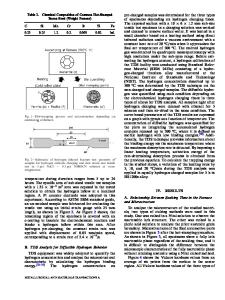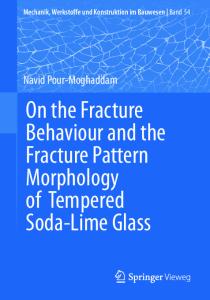Method of Evaluating Delayed Fracture Susceptibility of Tempered Martensitic Steel Showing Quasi-Cleavage Fracture
- PDF / 2,044,437 Bytes
- 12 Pages / 593.972 x 792 pts Page_size
- 47 Downloads / 296 Views
CTION
A method for evaluating delayed fracture susceptibility has to be established for applying high-strength steels more widely in order to assess the safety of such steels in actual environments and develop steels with lower delayed fracture susceptibility. A number of evaluation methods have been proposed so far.[1–5] They can be categorized as providing either a relative or an absolute evaluation. The former type of evaluation can determine only the comparative merits of different kinds of steels, whereas the latter type can estimate the lifetime of steels in actual environments and assess whether they can be used or not. Both relative and absolute evaluation methods require hydrogen charging in a laboratory and the application of stress for accelerating delayed fracture, which can occur in a few months to a couple of decades in an actual environment.[6] Widely used methods of hydrogen charging include immersion in HCl or NH4SCN aqueous solution, cathodic electrolysis, and exposure in a high-pressure hydrogen gas atmosphere. Regardless of the type of hydrogen charging method used, the states of hydrogen YU MATSUMOTO is with the Graduate School of Science and Technology, Sophia University, 7-1 Kioi-cho, Chiyoda-ku, Tokyo, 102-8554, Japan, and also with Nippon Steel & Sumitomo Metal Corporation, Chiba, Japan. KENICHI TAKAI is with the Department of Engineering and Applied Science, Faculty of Science and Technology, Sophia University, 7-1 Kioi-cho, Chiyoda-ku, Tokyo, 102-8554, Japan. Contact e-mail: [email protected] Manuscript submitted May 13, 2016. Article published online December 2, 2016 666—VOLUME 48A, FEBRUARY 2017
present in steels are identical under the same charging temperature and hydrogen content.[7,8] However, immersion methods change the surface states of steels[8] and cause the blunting of notches[6] due to corrosion and dissolution, which affect fracture strength in delayed fracture tests. Hydrogen charging and stress application procedures differ among researchers. Some researchers start hydrogen charging followed by the simultaneous application of constant stress,[5] i.e., hydrogen is absorbed after almost all mobile dislocations have slipped and piled up; other researchers precharge hydrogen prior to starting stress application,[9] i.e., almost all mobile dislocations slip in the presence of hydrogen. Although this difference may affect fracture strength, its effect has not been well understood. As for stress application, both static stress and dynamic stress have been widely applied. Examples of static stress application include a constant load test (CLT)[5,9,10] and a U-bending test.[3] Examples of dynamic stress applied in tensile tests[4,11,12] at constant strain rates include a slow strain rate tensile test (SSRT)[4,11] and a conventional strain rate tensile test,[1,12] which have been proposed as methods for evaluating delayed fracture susceptibility. Ensuring the consistency of fracture strength between static and dynamic methods is a critical issue. Terasaki and Tsuzaki have reported tha
Data Loading...











